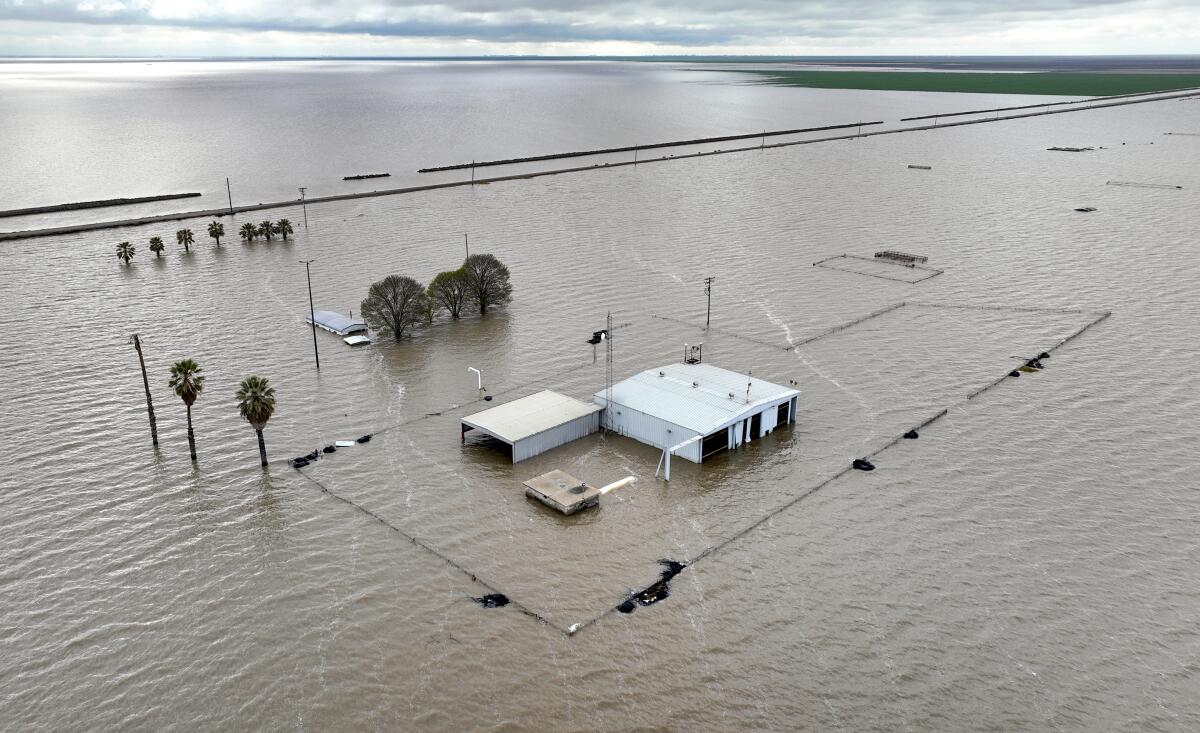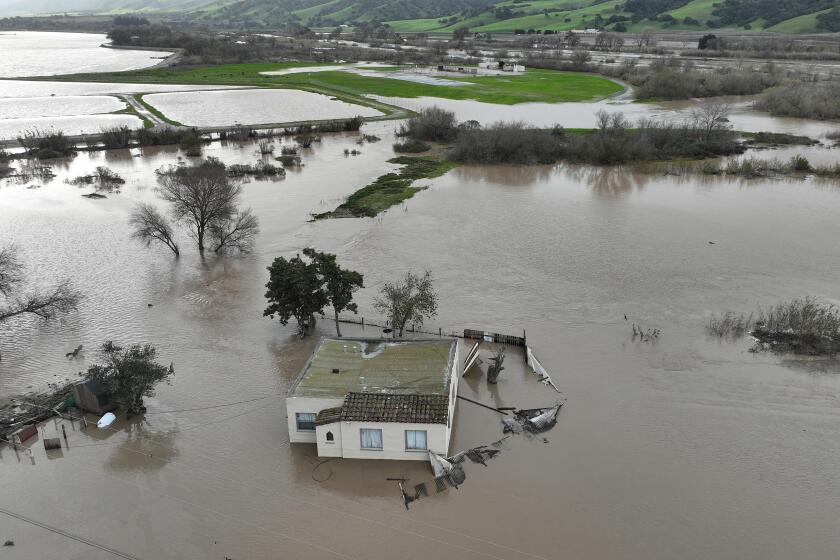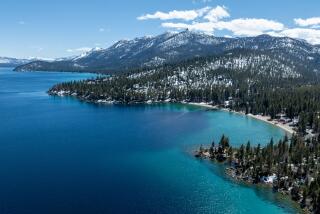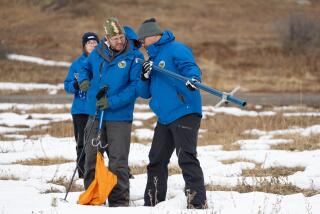Editorial: Drought and flood, California’s double whammy

Just as federal officials were laying out alternative scenarios last week for steep water supply cuts from the Colorado River due to the drying Southwest, California officials were warning that this year’s historic Sierra snowpack could flood much of the state later this year.
So do we have too much water or not enough? The only honest answer, as head-spinning as it may be, is that we have both problems at the same time. Lake Mead, and farther up the Colorado River, Lake Powell — Southern California’s two big out-of-state water supplies — remain dangerously low and will not fill again, despite a wet Rocky Mountain winter.
Meanwhile, reservoirs in California are full. But much of that precious water will have to be released to make room for melting snow. How much room depends on weather conditions over the next several months. The state has one of its largest snowpacks in recorded history — 234% of average, measured by water volume, and in some parts of the Sierra more than 300% — but much of it could instantly turn to floodwater if we get one of those monstrous heat waves we’ve experienced in recent years. Or it could evaporate right off the mountainsides, leaving us nothing. Or, with luck, it could melt steadily over the summer.
State water officials predict that Lake Tahoe will be 3 feet deeper by summer’s end and that ancient Tulare Lake, making a rare reappearance this year after its waters were diverted for agriculture a century ago, could grow large enough to threaten homes in San Joaquin Valley cities such as Corcoran and might stick around for two years or more. The San Joaquin and Tuolumne rivers will run at more than twice their average volumes later this year.
Letting excess stormwater inundate carefully managed low-lying areas would be good for California’s natural ecosystems and a large, thirsty population at risk from water shortages and flooding.
The last two decades have brought climate patterns quite different from those around which the Western United States was engineered in the late 19th and 20th centuries. Wet years are now brief breaks in an extended era of aridification. Dams and aqueducts built for wetter times still serve us but no longer suffice. The same is true of our system of water rights, regulations and agreements. All are outmoded.
We once had enough reservoirs in place to store sufficient water to see us through the occasional dry winter and capture enough runoff and snowmelt to protect us from flooding. But no number of dams can hold back enough water to outlast a 10-year drought or protect us from cataclysmic flooding.
And the sobering truth is that California’s recent dry streaks have not yet matched the two-decade drought underway in the Colorado River Basin — but they could. The flooding we’re getting this spring, and that could get worse later this year, is a mere hint of what we can expect from a so-called ARKstorm (for Atmospheric River 1,000). The last such megastorm came in the winter of 1862 and put much of the San Joaquin Valley — and a good chunk of Los Angeles — underwater. Scientists say we’ll be getting one of those again, although they can’t say when.
Gov. Gavin Newsom has effectively ended environmental regulations protecting California rivers and migratory fish by extending drought-year waivers.
None of that means it’s time to pack up and leave. The California of the foreseeable future will continue to be a remarkably livable place, perhaps with fewer almond and pistachio orchards, because those trees can’t survive weeks of soaking roots in wet times and because there will be insufficient water to keep them alive in dry times.
Some valley landowners may follow the lead of ranchers who sold their land to organizations such as River Partners. That group’s Dos Rios floodplain restoration project at the confluence of the San Joaquin and Tuolumne rivers west of Modesto is a good template for the future — with river-adjacent land where floodwaters can be directed in years like this one, doing no damage to homes or crops, replenishing the depleted groundwater, restoring native plants and nurturing juvenile fish and other wildlife.
In Los Angeles and other cities accustomed to endless water supplies from the Colorado River, we may finally give up our lawns, the thirsty crop that’s never harvested or consumed.
There can be enough water to go around if we treat it as the valuable and sometimes dangerous thing that it is. We can weather the wet-and-dry, boom-and-bust cycle that nature throws at us if we give up our nostalgia for the more predictable California of the past and embrace the state as it is now and as it will become.
More to Read
A cure for the common opinion
Get thought-provoking perspectives with our weekly newsletter.
You may occasionally receive promotional content from the Los Angeles Times.











